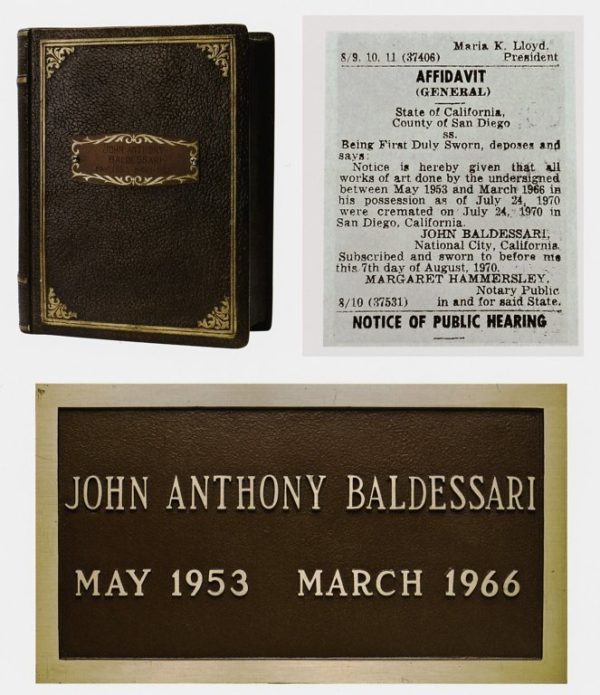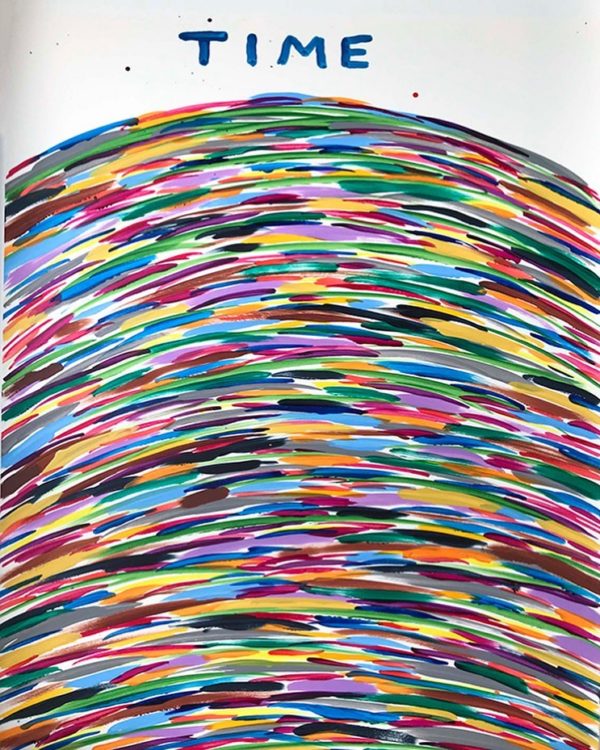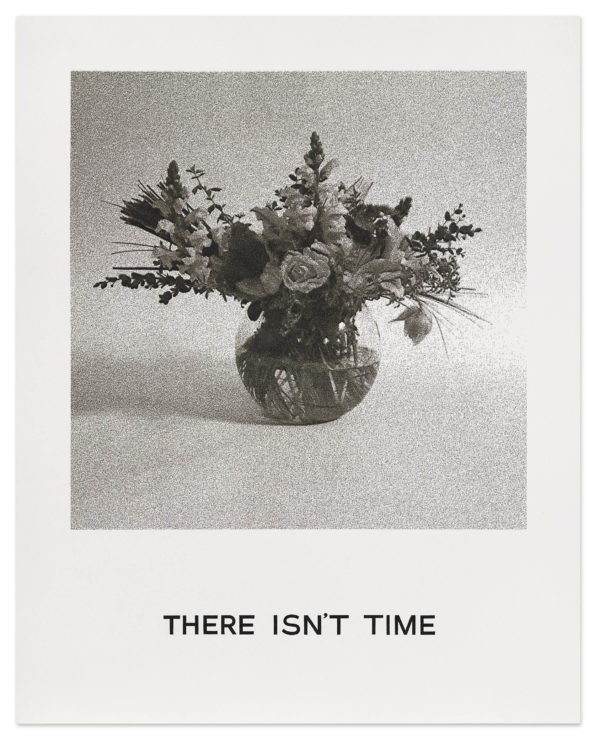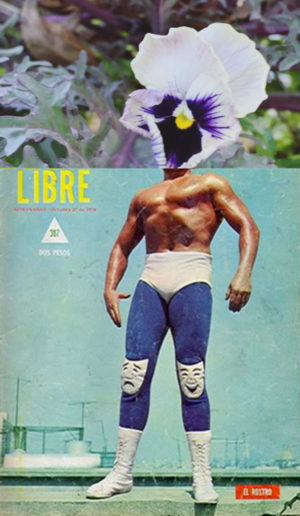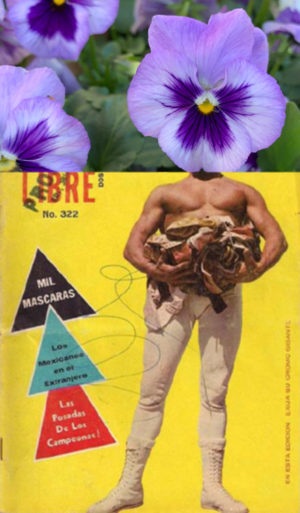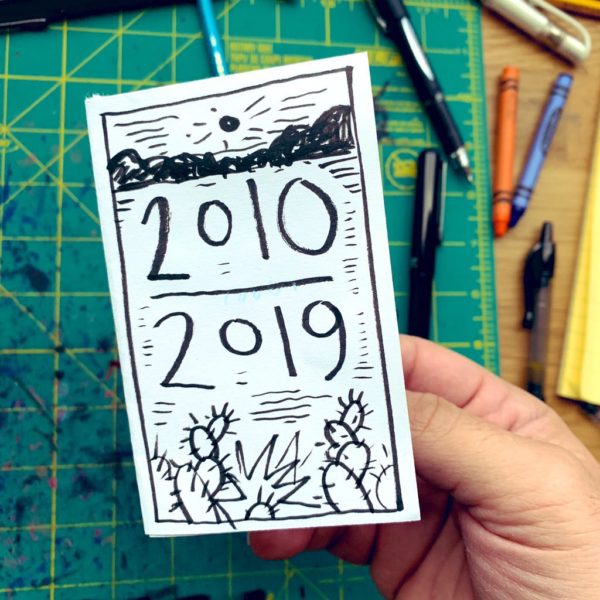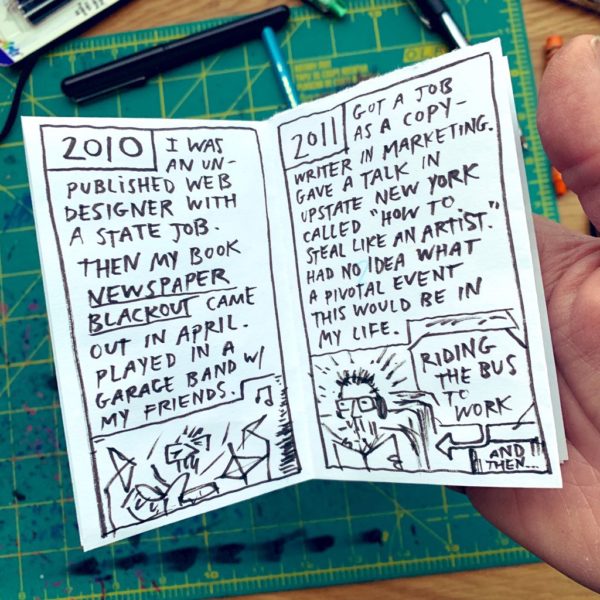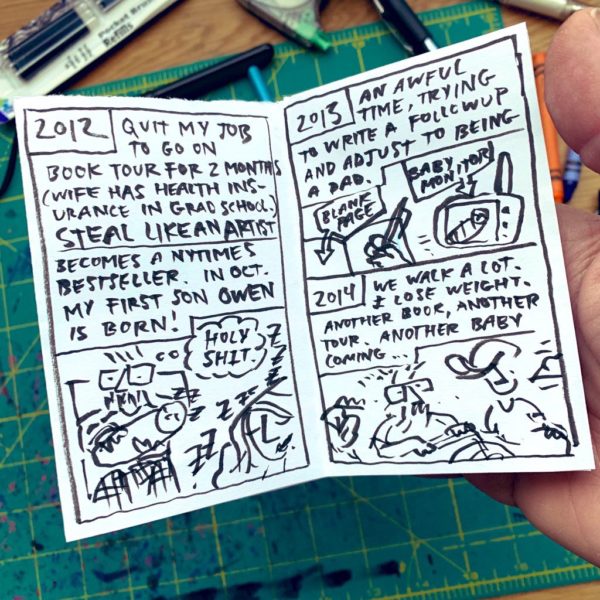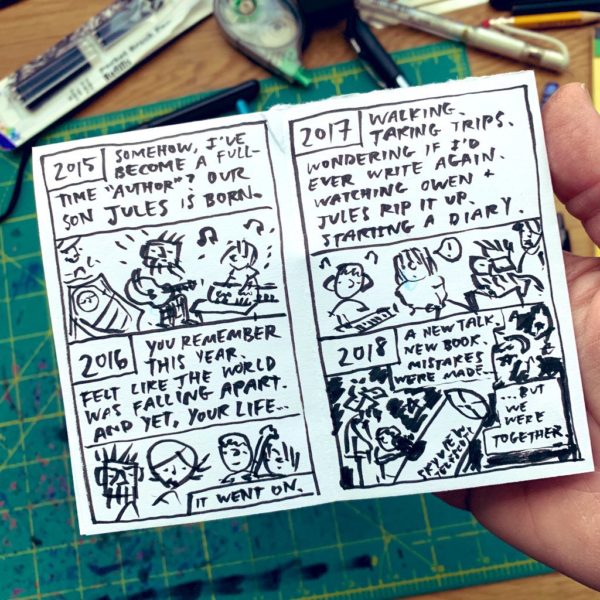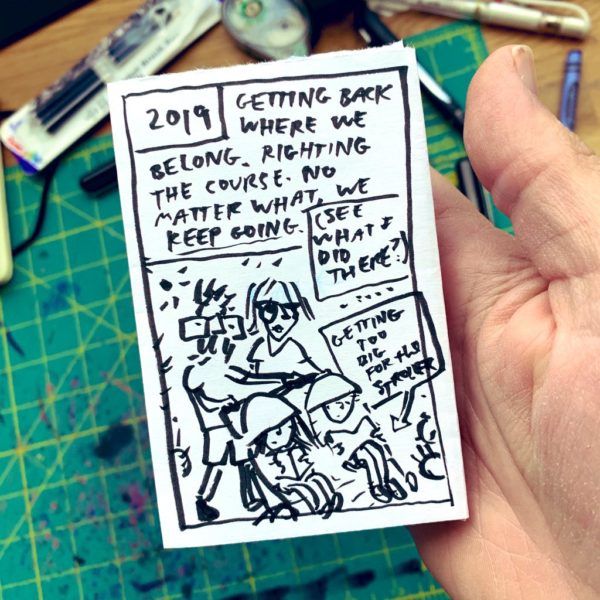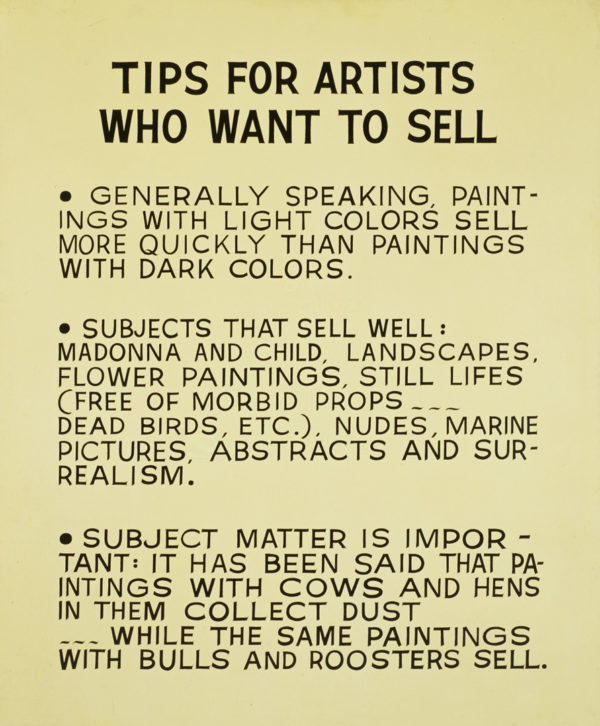
Last night I played my 7-year-old Supermarché’s short documentary about him, “A Brief History of John Baldessari.” (Wonderfully narrated by Tom Waits!) Owen laughed the whole way through it, pronounced it “the funniest video I’ve ever seen,” and requested that we watch it again.
Watch it, it’s great:
Off the top of my head, here are seven things in John Baldessari’s work that I think about a lot:
1. Pictures and words together to make a third thing.

“I’ve often thought of myself as a frustrated writer. I consider a word and an image of equal weight, and a lot of my work comes out of that kind of thinking.”
2. Bringing a sense of lightness and humor to art.

He said he didn’t try to be funny, but he was. “I’m blessed with a well-developed sense of absurdity—it’s what saved me.”
(I love that he had a drawing of Spongebob and a note from Stephen Hillenburg hanging in his studio.)
3. Teaching as making a space for learning to happen.
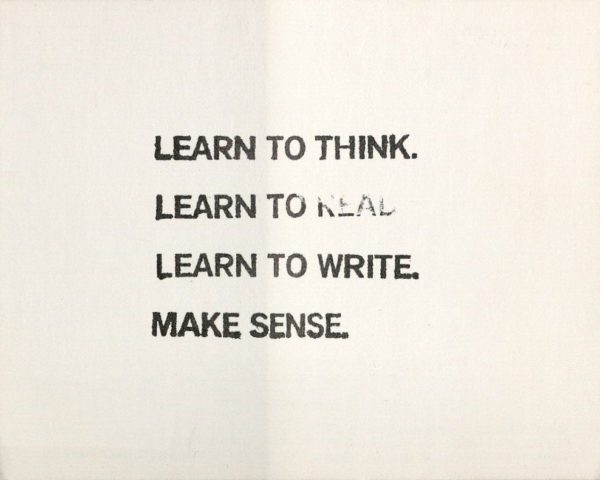
“I taught because I needed the money,” he said, “but I tried to keep it interesting by making teaching as much like art as I could.”
(See his brilliant list of assignments in the book Draw It With Your Eyes Closed.)
“I found out that you can’t really teach art, you can just sort of set the stage for it.”
One of my favorite stories about his teaching: he’d have a student throw a dart at a map of LA and they’d all go to the spot and hang out all day for inspiration, taking pictures and videos.
“When I think I’m teaching, I’m probably not,” he said. “When I don’t think I’m teaching, I probably am.”
4. Learning about art from little kids.
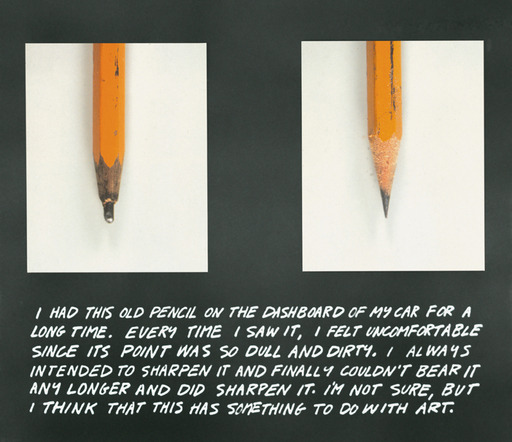
“I learned so much about art from watching a kid draw. I taught at the grade-school level. Kids don’t call it art when they’re throwing things around, drawing—they’re just doing stuff.”
5. Salvaging from the mess.
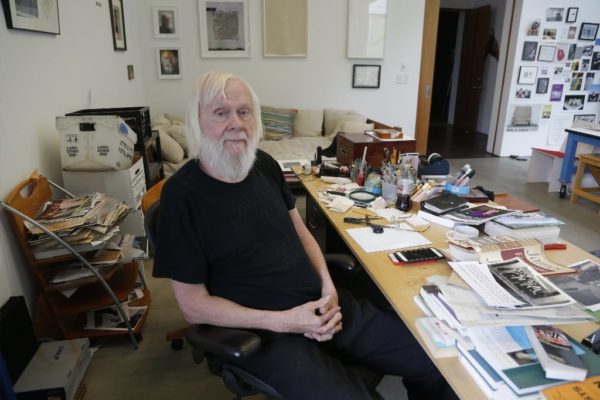
“I’m just messy, I don’t put things away,” he said. “I don’t throw things away in my mind, either; I keep them there.”
From his NYTimes obit:
His father was a salvage dealer, and the family grew its own fruits and vegetables, raised chickens and rabbits, and practiced composting waste. Mr. Baldessari often cited his childhood as a reason he had a hard time throwing anything away.
“It’s hard for me to throw anything away without thinking about how it can become part of some work I’m doing,” he said in an interview for this obituary in 2008. “I just stare at something and say: Why isn’t that art? Why couldn’t that be art?”
“Maybe because I’m tall and gangly, I’ve always considered myself an assembly of parts.”
6. Los Angeles. (Or: how “ugly” cities can be inspiring.)
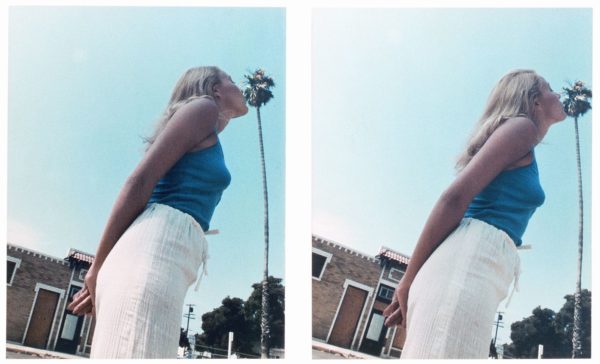
“I live here because L.A. is ugly… If I lived in a great beautiful city, why would I do art?” he said. “I always have to be slightly angry to do art and L.A. provides that.”
7. Subtraction

“Nam June Paik said, ‘What I love about your work is what you leave out’—that was a really nice compliment.”
He even once had all of his work cremated so he could start afresh.
RIP.
PS. After writing this all up, I realized all 7 of these are also things I love about Corita Kent.
